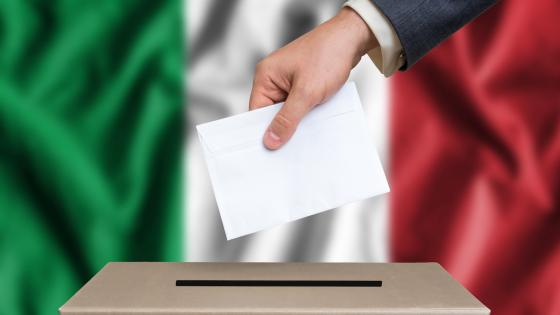For the third time in six years, Italians are called to vote for their national representatives. It is the sixth time that electors vote in a context of media bias. For ten years during the period 1994-2011, Berlusconi has controlled six out of seven national channels, due to his dual role as a media tycoon and prime minister. Besides the anecdotal evidence, Durante and Knight (2012) recently investigated the extent of the media bias towards Berlusconi and have estimated its magnitude in terms of time and quality of coverage of Berlusconi's party and opponents.
But how much does media bias affect electoral outcomes?
Della Vigna and Kaplan (2007) provide evidence that the introduction of Fox News increased Republican vote by 0.4 to 0.7 percentage points in the 2000 Presidential elections. Enikolopov et al. (2011) analyse the 1999 Parliamentary elections in Russia and document that availability of an independent national TV channel decreased the vote for the government party by about nine percentage points.
New evidence from Italy
Our recent work addresses the Italian case (Barone et al. 2012). This case is interesting because, contrary to the US and Russia, all Italian voters know that Berlusconi owns the major commercial TV network since the early eighties. We exploit exogenous variation in viewers' exposure to Berlusconi bias using idiosyncratic deadlines to switch to digital TV from 2008 to 2012. At the deadlines, old analogue signals were switched off and only digital signals kept on airing. Digital TV improved transmission efficiency, and increased the number of free national channels tenfold. Most digital channels are aired by new media companies, which have no ties to Berlusconi. After switching to digital TV, many Italian households changed their viewing habits. From June 2008 to June 2011, the share of viewers of Berlusconi-controlled channels dropped from 84% to 71%. Over the same period, viewers of new channels increased from 2% to 17%. We explore the causal effect of the shock to bias exposure on voting behaviour at regional elections in March 2010, the first elections held during the switch-off process. We look at Piedmont, a region where western towns switched to digital TV in autumn 2009, while eastern towns switched in autumn 2010. This setup allows us to compare the electoral outcome of Berlusconi’s party between municipalities that were exposed to the new digital channels and those where the digital switch-off had not taken place yet. In order to make the comparison more credible, we compare municipalities close to the switch-off geographical boundary. These municipalities are only a few kilometres apart, and they differ only in terms of access to the new television technology.
Although the control of most pre-digital outlets by Berlusconi was widely known, the switch caused a drop in his coalition vote share by 5.5 to 7.5 percentage points. This effect is economically and statistically significant. Scaling the effect by 2005 Berlusconi supporters and non-voters who watched new channels in 2010, we estimate that at least 30% of them changed their voting behaviour after the switch-off of analogue TV. The effect was stronger in towns with older and less educated voters. At least 30% of digital users had not filtered out the bias from 1994 to 2010. Moving to digital TV affected voting via turnout. Previous Berlusconi supporters went to vote less than others, hence his vote share dropped.
Policy implications
Our results imply that policies should be implemented to help individuals, and the most vulnerable demographics in particular, filter out biases in information over time. Examples are voters exposed to biased political information, investors exposed to biased analysts forecasts, or patients exposed to biased treatment recommendations. In our setting, persuasion survived over time even if all Italians were aware that Berlusconi controlled most TV channels. Mandating disclosure of conflicts of interest is therefore not a sufficient provision. In the case of TV, protection of systematically persuaded agents should add to the rights of free speech and minority representation in motivating antitrust provisions.
References
Barone, Guglielmo Francesco D'Acunto and Gaia Narciso (2012), "Telecracy: Testing for Channels of Persuasion", Trinity Economics Papers tep0412, Trinity College Dublin, Department of Economics.
DellaVigna, Stefano and Ethan Kaplan (2007), "The Fox News Effect: Media Bias and Voting", Quarterly Journal of Economics, 122(3):1187-1234.
Durante, Ruben and Brian Knight (2012), "Partisan Control, Media Bias, and Viewer Responses: Evidence From Berlusconi Italy" Journal of the European Economic Association, 10(3):451-481.
Enikolopov, Ruben, Maria Petrova, and Ekaterina Zhuravskaya (2011), "Media and Political Persuasion: Evidence from Russia", The American Economic Review, 111(7):3253-3285.

